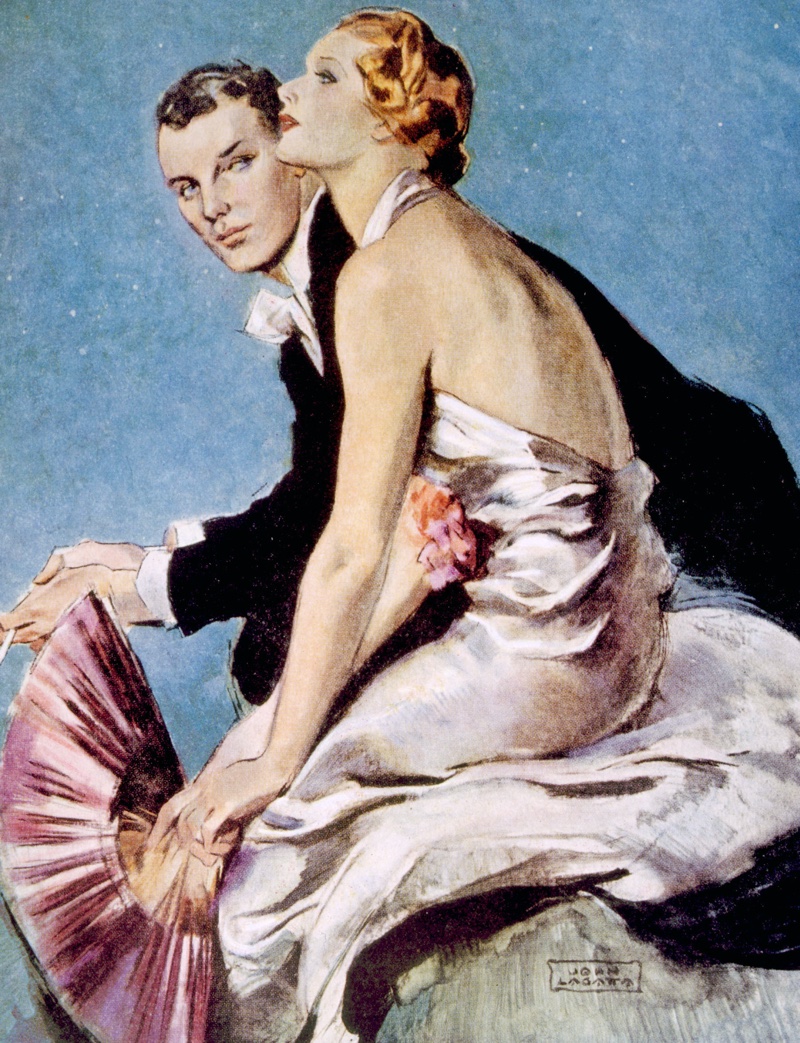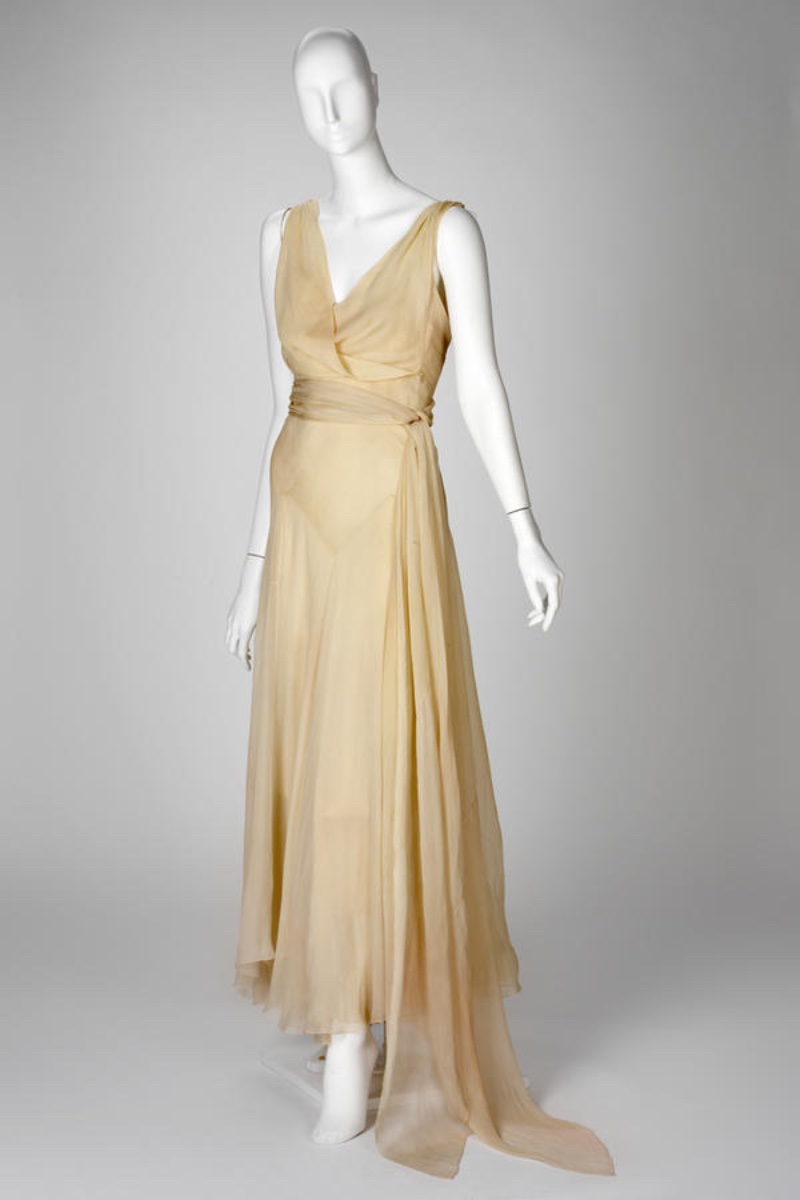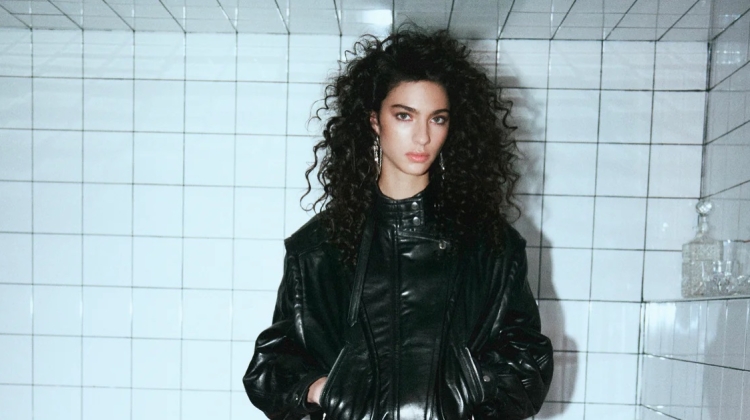
The 1930s marked a unique time in women’s fashion. With the stock market crash of late 1929, the Great Depression began in the United States and was seen as the worst economic recession the country had seen in its history. Many Americans escaped to the movie theaters to see the glitz and glamour of Hollywood films. 1930s clothing took on a life of its own.
Hollywood Glamour
If a woman could not afford a new wardrobe, at least she could see movie stars like Vivien Leigh, Marlene Dietrich, Joan Crawford, and Carole Lombard live a picture-perfect life. Besides escaping through movies, women could upgrade their accessories to refresh their wardrobes. Read below to see how 1930s fashion differed from the roaring 1920s style.
1930s Fashion Trends

The 1930s were a decade of innovation and change, with designers experimenting with new shapes, fabrics, and styles. One of the most iconic trends of the era was broad shoulders, which became a defining feature of evening and everyday wear. Jackets and blouses were often designed with exaggerated shoulder pads, creating a strong silhouette that emphasized a woman’s confidence and strength.
Another hallmark of 1930s fashion was puffed sleeves, which added a touch of femininity and softness to even the most structured outfits. From dresses to blouses, sleeves were often puffed at the shoulder, creating a romantic and delicate look that was elegant and modern.
The matching belt was also a must-have accessory of the era, adding definition and shape to dresses and jackets alike. With its sleek and streamlined design, the belt was a simple yet effective way to accentuate a woman’s curves and create a flattering silhouette.
Day Dresses

The 1930s day dress epitomizes sophisticated style, characterized by flowing fabrics, feminine silhouettes, and bold prints. It was cut on the bias, creating a fluid, figure-flattering shape that hugged the body’s curves.
Butterfly sleeves were popular, as were sleeves that were often slightly puffed or draped. Necklines ranged from high and modest to daring and plunging, giving women of the time a range of choices to express their individuality.
Bold prints and patterns were a defining feature of 1930s day dresses, with graphic geometric designs, floral prints, and stripes adding a touch of drama and artistry. They often featured intricate detailing and contrasting colors, creating a work of art that was both elegant and exciting. Today, the enduring legacy of 1930s day dresses continues to inspire, reminding us that true sophistication is timeless.
Bolero Jackets

The 1930s was a decade defined by bold options, and few garments embodied that spirit quite like the bolero jacket. This cropped, waist-length jacket was a must-have accessory for the fashionable set, adding a touch of drama and sophistication to any ensemble.
With its iconic curved hemline and structured silhouette, the bolero jacket was a statement piece that could transform any outfit. From evening gowns to daywear, the bolero was a versatile accessory that could be dressed up or down. The addition of intricate detailing, such as beading, embroidery, and sequins, elevated the bolero jacket to a true work of art.
The bolero jacket’s popularity was due in no small part to the glamorous Hollywood stars who sported them on and off the silver screen. Film icons like Marlene Dietrich and Joan Crawford were often photographed in boleros, solidifying the garment’s status as a must-have accessory.
The House Dress
The 1930s house dress was a staple that embodied the practicality and comfort of everyday life. Designed for women who spent much time at home, it was made from simple, easy-to-wash fabrics like cotton or rayon and was typically loose-fitting and unstructured.
Despite their practical design, house dresses of the 1930s were marked by a sense of femininity and elegance. They were often embellished with bold prints, delicate details, and intricate embroidery, creating a functional and beautiful look. House dresses were also designed with comfort in mind, often featuring wide collars, puff sleeves, and loose skirts that allowed for ease of movement.
Evening Dresses

1930s fashion saw a return to longer hemlines for women. The term hemline first came into use during this decade. During the day, ladies would wear skirts just above the ankle while nighttime evening gowns reached the floor.
Women also embraced the natural waist again compared to the 1920s flapper era, often featuring loose silhouettes. Designers like Vionnet and Schiaparelli are credited with influencing a more tailored and defined look in fashion.

Swimwear
The previous decade saw a more form-fitting and sleeker-looking swimsuit, although it covered much of the body. And for the 1930s, more advances were made for swimsuits. Sunbathing was all the rage, and women’s swimwear designs included backs with lower cuts and lowered bust lines to achieve a suntanned look. Two pieces were introduced by the latter part of the decade, exposing a woman’s midriff.

Pants for Women
Although it was not too familiar, in the 1930s, women who worked in factories would wear pants. Notable actresses like Greta Garbo, Marlene Dietrich, and Katharine Hepburn were captured in trousers. It would take forty more years until society fully embraced women wearing pants, but the decade seemed to begin as a turning point thanks to these style trailblazers.

1930s Fashion Designers
As the 1920s ended, the 1930s saw a return to femininity. Gone was the silhouette that suited boyish figures with flattened bust lines in favor of shapes that nipped at the waistline and were more “womanly.” Famous designers such as Elsa Schiaparelli, Madeleine Vionnet, and Coco Chanel influenced clothing with innovative designs. The glamour of film also inspired these designers.
Elsa Schiaparelli: Shoulder Pads & The Wrap Dress

The 1930s also introduced the wide shoulders look inspired by Italian fashion designer Elsa Schiaparelli, who used shoulder pads. Schiaparelli is credited with inventing quite several designs. She created the wrap dress—a style with a front closure wrapped with ties and featuring a V-neckline.
The designer is also known for inventing culottes; the divided skirt look allowed women to play tennis or ride bikes. Schiaparelli and Chanel were described as bitter rivals, with the former closing her business in 1954–although the brand name would rise again years later.
Coco Chanel & The Little Black Dress
In 1926, Vogue US published a picture of Coco Chanel’s little black dress and called it “Chanel’s Ford”—named after the affordably priced Model T car by Henry Ford. Although the trend was initially made in the 1920s, it did not take off until the 1930s.
This was for several reasons. Black was once thought of as a color of mourning. But that idea changed as The Great Depression called for more simple clothing, and Hollywood film stars also wore the color on film.
Madeleine Vionnet & The Bias Cut Dress

French designer Madeleine Vionnet was famous for her bias-cut clothes. Her dresses were Grecian-inspired, with romantic draping achieved by cutting the fabric across the grain at a 45-degree angle.
Vionnet’s designs embraced the natural female form with free-hanging material, minimizing darting or eliminating it altogether. Due to wartime hardships, Vionnet closed her design business in 1939 but remained an influential designer of the early 20th century.
Thirties Fashion en Vogue

Cecil Beaton was a renowned British photographer, artist, and designer known for his iconic work that exudes glamour and elegance. He gained fame in the 1930s for his ability to capture the opulence, luxury, and beauty of the decade through his photographs and designs. His portraits were mainly celebrated during this time, featuring subjects from royalty to movie stars and artists. Beaton’s unique talent for capturing the essence of people with a touch of theatricality made him one of the most sought-after photographers of the era.
In addition to his photographic work, Beaton made significant contributions to the fashion world during the 1930s. He regularly contributed to Vogue, capturing the latest styles and trends. A sense of fantasy and glamour marked Beaton’s fashion photography, often depicting models in dreamlike settings and poses. His creativity and eye for design made him a highly influential figure in the industry, and his legacy continues to inspire contemporary fashion and photography.
Fashion Icon Wallis Simpson

Duchess of Windsor Wallis Simpson, known for her iconic style and controversial love affair with King Edward VIII, left an indelible mark on 1930s fashion. Her sophisticated and streamlined style, characterized by daring silhouettes and bold color choices, challenged the traditional norms of the era.
A love of bold hues and clean lines defined Simpson’s signature look. She was known for her daring style, favoring figure-hugging dresses, sharply tailored suits, and statement-making accessories. Her penchant for bright shades, particularly her love of canary yellow, became a hallmark of her wardrobe, inspiring a generation of women to embrace color in their choices.
Simpson’s influence extended beyond her style. She also played a significant role in popularizing specific trends of the era, such as the bias cut and the chic “up-do” hairstyle. Her bold choices challenged the conservative sartorial norms of the time, and her impact continues to be felt today.
Starlet Bette Davis

The 1930s was a time of glamour and sophistication, and few stars embodied that spirit quite like Bette Davis. Known for her captivating performances and sharp wit, Davis was also a style icon with a signature look that was both daring and elegant. With her unique choices and fearless attitude, Davis challenged the era’s norms, inspiring a generation of women to embrace their individuality and express themselves through style.
Whether on screen or off, Davis’s style was defined by dramatic silhouettes, statement-making accessories, and bright colors. She was known for her love of daring hats, gloves, and jewelry and her willingness to take risks, such as sporting trousers when it was still considered unconventional. Davis’s impact was significant, with many of her signature looks becoming enduring style staples, from her chic bob hairstyle to her figure-hugging gowns.
1930s Accessories

With the Great Depression affecting many women during the 1930s, it was less common to buy new clothes. A way to still look glamorous while spending less was investing in accessories. A nice pair of shoes or a new hat could add a pop of panache to just about any look.
As with clothing and hairstyles, many women were inspired by what they saw at the cinema. The outfits of Carole Lombard, Joan Crawford, or Jean Harlow could influence wardrobe choices. Discover more about the decade’s accessories below.
Hats
The cloche hat of the 1920s remained popular up until about 1933. But as the decade progressed, more asymmetrical, masculine-inspired styles became popular. The slouch hat (or Panama hat as it is known today) was widely popular during the 1930s, and women wore wide-brimmed straw hats during the summertime. Hats were an essential part of a woman’s look.

Shoe Styles for Women
During The Depression, women’s heels styles became broader and lower compared to the 1920s. Most heels were between 1.5 to 2.5 inches tall. Again, Oxfords were worn often by women. But what made 1930s fashion stand out from other decades is that the shoes had many decorative elements. Many shoes saw cut-outs as well as two-tone decorations. Additionally, the Mary Jane shoe was a timeless classic that remains a beloved staple, with its iconic strap and low heel adding a touch of sophistication and femininity to any outfit.

Gloves: Day & Evening
Many women wore gloves in the 1930s. During the day, wearing short gloves (no longer than the wrist) was customary. While in the evening, elbow-length styles were popular. Matching gloves with shoes or handbags was seen as stylish.

Jewelry
Costume jewelry was popular in the 1930s because it was inexpensive and considered disposable. Coco Chanel is often credited with creating costume jewelry. Art Deco still influenced designs in the earlier part of the decade, but women preferred simpler styles as the years went on.
Contrasting colors and big and bold gems were all trends of the decade. For those who admire timeless elegance, these vintage-inspired accessories are a wonderful entry point into the world of classic jewelry. It’s perfect for echoing the sophistication of the 1930s in modern-day fashion.
Final Words

In the 1930s, the interwar period saw significant changes in women’s fashion as designers experimented with new shapes, fabrics, and styles. With the Great Depression affecting many Americans, women turned to Hollywood films for a glimpse of glamour, and the resulting influence can be seen in the era’s clothing.
Broad shoulders, puffed sleeves, and matching belts were defining features of 1930s fashion, while bold prints and patterns characterized day dresses. The bolero jacket and house dress were practical yet elegant staples, while longer hemlines and natural waistlines defined evening wear.
Notable designers like Elsa Schiaparelli, Madeleine Vionnet, and Coco Chanel contributed significantly to fashion, introducing iconic designs like the shoulder pad, wrap dress, and little black dress. Meanwhile, fashion icons like Wallis Simpson and Bette Davis challenged the era’s sartorial norms with bold choices and signature styles.
With the Great Depression affecting many women, accessories like hats, shoes, gloves, and jewelry allowed for a touch of glamour at a lower cost. The enduring legacy of 1930s fashion continues to inspire and influence style today, reminding us that true sophistication is timeless. Want to discover more about clothing history? Delve into our 1940s fashion guide for women.





